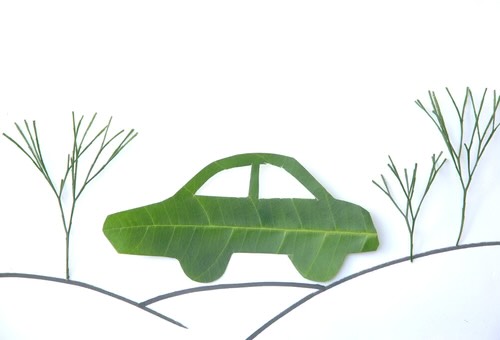The Green Divas | s15:e5
The answer to that question is complicated and constantly evolving. In this episode, with the help of EV experts Seth Leitman (The Green Living Guy) and John Voelcker (Contributing Editor at Car & Driver Magazine), we made an attempt to de-mystify, de-tangle and myth-bust … and answer some of the typical objections of Electric Vehicle naysayers.
From the carbon cost of the full battery lifecycle… to understanding how EVs are charged. It’s all a bit complicated with so many variables to plug in (cute pun?). But the bottom line, according to our experts and many studies, is that EVs seem to win out over their gas-powered counterparts.
In 95% of the world, driving an electric car is better for the environment than driving a gasoline-powered car.
According to researchers from the universities of Cambridge, Exeter and Nijmegen in The Netherlands
MIT researchers have found that over the course of their driving lifetimes, EVs will create fewer carbon emissions than gasoline-burning cars under nearly any conditions.
According to MIT’s senior research scientist Sergey Paltsev, “Currently, the electric vehicle in the U.S., on average, would emit about 200 grams of CO2 per mile… We are projecting that with cleaning up the grid, we can reduce emissions from electric vehicles by 75 percent, from about 200 (grams) today to about 50 grams of CO2 per mile in 2050.”
That’s good news. But like anything else we humans create, there are downsides. If you’re considering an EV down the road or want to learn more about the environmental impact of the EV you currently have, we hope you’ll listen to this podcast episode and read on for some interesting electric vehicle factoids and resource links.

EVs and Climate Change
Transportation is actually the largest source of climate pollution. EVs can help drive that down, so to speak. According to our EV expert John Voelcker:
The “wheels-to-wheels” fully accounted-for CO2 per-mile emissions of an EV are, at worst, equivalent to those of a 35-mpg vehicle. That’s well above the 25-mpg sales-weight average of new vehicles sold in the U.S. today.
But that figure assumes the EV is charged on the filthiest, most coal-heavy power grids in the U.S. If charged on much cleaner grids (e.g. Pacific VW, the Northeastern U.S.) the equivalence is 100 mpg or more. And there will simply NEVER be a gasoline-only vehicle that achieves 100 mpg.
Better yet, the EV gets cleaner over its lifespan as the grids it’s charged on slowly decarbonize. It will emit less CO2 per mile at the end of its life on cleaner grids than it did on the same grids when they were dirtier at the start of its life.
And, yes, those figures (from the Union of Concerned Scientists and many other studies) include manufacturing burden. An EV has a higher embedded carbon when it rolls off the line than a comparable gasoline vehicle, but because it uses so much less energy per mile, it goes down to equal within 15,000 to 40,000 miles depending on battery size. Everything after that is gravy. And in a 150,000-mile life, the difference is enormous.
EVs and Our Health
Because EV’s lifetime greenhouse gas emissions is lower than for petrol powered vehicles. That means that they’re not only better for our climate, but better for our health, especially in large metro areas.
Gas powered cars spit out fine particulate matter and other harmful compounds. So electric cars, once on the road, are cleaner. Even taking into consideration charging up with coal powered electricity.
Are EVs Worth the Higher Upfront Cost?
This is another rocket science project likely to explode many heads. But we’re here to help. The average sticker price of a new electric car in 2021 was about $10,000 higher than the industry average, which includes both gas-powered and electric vehicles.
According to the Union of Concerned Scientists, the annual EV energy savings range from $440 to over $1070 per year, depending on the electricity provider, and of course the cost of gas. If you have your own solar panels, well, you’d really save a ton.
EVs have lower maintenance costs. A 2020 Consumer Reports study found that EV owners, on average, spend 60% less on fuel compared to internal combustion engine vehicles.

We stumbled upon Car & Driver’s analysis of the cost of ownership comparing the Hyundai Kona vs. Kona Electric and the gas guzzling Ford F150 vs. its electric counterpart, the F-150 Lightening.
During the 1st 3 years of ownership, the electric versions ended up costing less but ONLY if those vehicles qualified for the federal EV tax credit. In the US, be sure to check both the federal and state tax credit requirements before making your final decision. Search by state here. Still confused? Check out “Understanding the Tax Credits Before Buying an EV.”
You can do you own vehicle cost comparison here.
The Dark Side: Mining for Lithium & Other Minerals for EV Batteries
EVs are in their infancy so there’s a lot of work to do in order to develop more sustainable cradle-to-grave solutions. Mining for the minerals needed for the lithium-ion batteries can be downright disturbing. Especially given the fact EVs aren’t the only products that use these batteries. They’re in vaping devices, your personal devices (cell phones, tablets, and laptops), E-Bikes, electric toothbrushes, tools, hoverboards, scooters…
Our hope is that all the genius level people, like those at MIT, will find more sustainable methods for mining. Until then, we will hope that strict regulations will minimize the environmental damage caused by the mining of lithium and other minerals needed for lithium batteries.
In prepping for this episode, we did a lot of our own mining. The information we dug up only scratches the surface but we’ll share it with you here.
Lithium can be extracted in three ways: from hard rock, which is common in Australia; from sedimentary rock, a process currently under development in the U.S. Southwest; and through the evaporation of brines found beneath salt flats in South America.
The latter method is an extremely thirsty process. Salty lithium-containing water, called brine, is pumped into massive ponds, where it can take years for the evaporation process to separate the lithium.
The production of unrefined lithium through these evaporation ponds uses a lot of water: around 21 million liters per day. Approximately 2.2 million liters of water is needed to produce one ton of lithium. The technique drains already scarce water resources, damages wetlands, and harms communities.
50% of global lithium and cobalt reserves are in Chile and the Democratic Republic of Congo (DRC) respectively.
Chile has 43.7% of global reserves but unfortunately uses this evaporation ponds mining technique that drains already scarce water resources, damages wetlands and delicate ecosystems.
Watch this video to see the impact of this mining technique on indigenous communities and their access to safe water.
The United States currently supplies less than two percent of Lithium, with only 3.6 percent of global Lithium reserves according to the Union of Concerned Scientists. Despite these seemingly low numbers, there’s a “white gold” rush underway with more than 17,000 prospecting claims for lithium in Nevada alone.
While lithium mining could be great from an economic standpoint, the environmental impact could be devastating if we don’t put strict environmental guidelines/regulations in place and more sustainable methods developed at this early stage of the mining game.
Deep sea mining for others minerals that are part of the EV battery recipe—like cobalt and nickel—is another environmentally risky option that which could cause irreversible damage to marine ecosystems.
The lithium mining method featured in the video below is promising. It is less energy intensive and can recover geothermal power along with the metals. And potentially do less damage.
Geothermal energy companies have been at Salton Sea in California for decades drilling down into the nearly 700 degree water, allowing it to instantly boil up out of the ground. Steam from the hot brine — so-called because of its high mineral content — spins turbines, generating electricity. It’s then pumped back down into the Earth where it gets heated back up to start over again. This sort of energy is considered clean and renewable since it relies on heat occurring naturally in the Earth.~ CNN BUSINESS
It is promising that they’ve found a way to extract lithium from the brine! This lithium mining method can take place in Arkansas, Nevada, North Dakota and at least one more location in the United States.
The biggest questions:
How much lithium is there? Click here to view world reserves by country.
How long do we have? It would be ideal if we could just use the same Salton Sea method everywhere. And realistically, in order to meet the growing demand for lithium batteries, mountains will literally need to be moved (or just blown up). We don’t have those answers yet…. and can only hope more sustainable methods will be developed before too much damage is done to the environment and entire communities.
The Hopeful Side of EV Batteries:
The good news is that lithium-ion batteries could offer a less toxic and longer-lasting alternative for energy storage compared to lead-acid batteries. And, as long as the battery isn’t damaged, they have a 2nd life with an estimated 80% of its original capacity.
If recycled, the critical materials—cobalt, lithium, nickel, and manganese—can individually be recovered using a hydrometallurgical process at a rate of 95-98 percent.
The question is, will we recycle EV batteries? The recycle rate for lithium-ion batteries in consumer electronics is estimated to be a disappointing 5 percent. We need to do and will likely do better when it comes to EV batteries, especially with more than 12 million tons of lithium-ion batteries expected to retire between now and 2030.
We’re hopeful. There’s a growing network of recycling companies that will likely be ready to handle this influx of EV batteries. That’s great news, given the fact that about one EV every 3 seconds is added to the global fleet, which should reach 25 million total vehicles by the end of 2022.
More great news: Recent research has shown that by 2050 recycled materials could supply 45–52% of cobalt, 22–27% of lithium, and 40–46% of nickel used in the United States light- and heavy-duty vehicle fleet.
We’d love to hear from you about your own experience with EVs!
Leave a comment here or on social media. This is a new frontier and we’d to keep the conversation going with you.